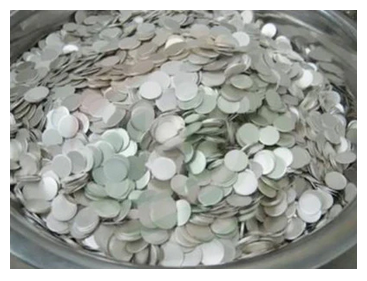What’s the Difference Between Anode and Cathode Materials?
An anode is a
negative electrode coupled with cathode constituents. The anode supplies
perform as the host where they reversibly let lithium-ion intercalation/deintercalation
throughout charge or discharge cycles.
Significant
advancements have been made in rechargeable batteries and most of this work is
clearly witnessed in electrical vehicles. Consequently, common terms like anode
and cathode gained visibility. While both can be defined by the flow of
current, there is a drastic difference between the two, which needs more
clarity.
So, in this
post, we will walk you through what is anode
material, what is cathode, how they work, and where they are
used.
Anode vs Cathode: An
Overview
Anode
An anode is
basically a negative electrode and one of the most important portions of a
battery. It’s generally made of a metal that oxidizes and leads electrons to
the cathode (the positive electrode). This is an electrochemical response that
produces electrons (i.e., electricity).
How Does an Anode Work?
An anode is a
corroding metal, such as zinc or lithium, which means it is unable to find electrons.
It exists in an electrolyte solvent and gradually erodes as electrons move
along a conductor to the cathode.
The electrode
(whether it be a metal wire or tube) is how you access the energy the anode
makes, and eventually, how a battery powers your devices. When the anode
entirely erodes, the battery loses charge.
Materials Good for Anode
Anode
generally comes from a wide range of materials including lithium, graphite,
platinum, and zinc. A good anode must have an efficient reducing agent, good
conductivity, stability, and high output.
What’s Cathode?
Like an
anode, a cathode is one of the electrodes that are referred to as the positive
electrode because they only gain electrons rather than lose them. Thus,
cathodes reduce while anode oxidizes.
How Does a Cathode Work?
A cathode
receives electrons from the anode. Both the anode and cathode are merged in an
electrolyte solution, and energy travels over the conductor from the negative
to the optimistic portions of your battery. This, in a nutshell, is how a
battery produces energy.
Materials Good for Cathode
A cathode can
generally be any material as long as it has an effectual oxidizing agent.
Metallic oxides make cathode materials because they have a purposeful working
voltage. These comprise graphic oxide, copper oxide, and lithium oxide.
Throughout the normal usage of rechargeable batteries, the capability of
the positive electrode outweighs the negative electrode. On the contrary, the
role of each electrode fluctuates during the discharge or charge cycle – during
discharge cathode positive means negative anode while during charge the
positive anode means negative cathode.
If you’re looking for advanced materials, laboratory equipment, and R&D services, be aware of the anode, cathode, and luminescent materials to meet your customer needs and specifications.


Comments
Post a Comment